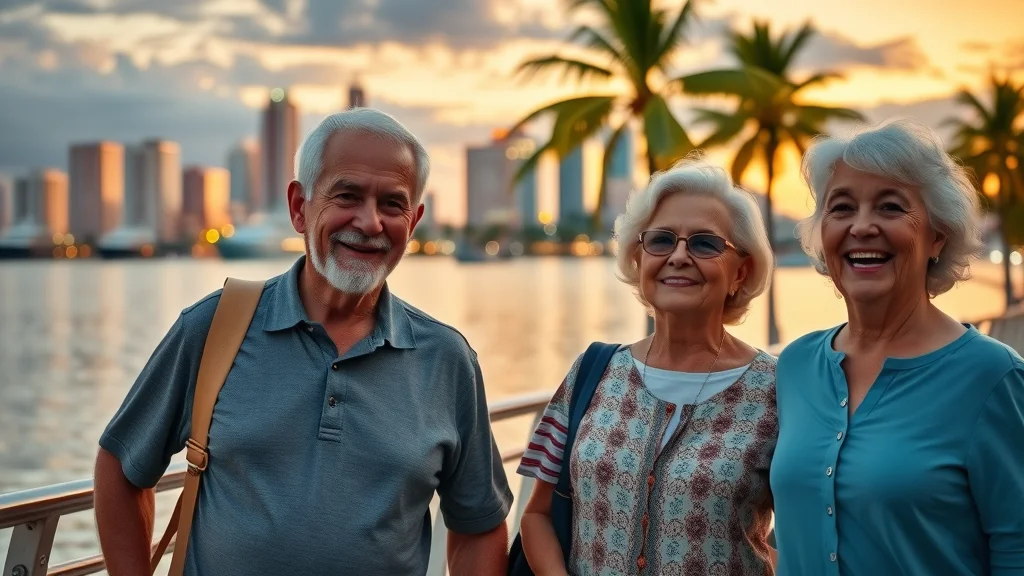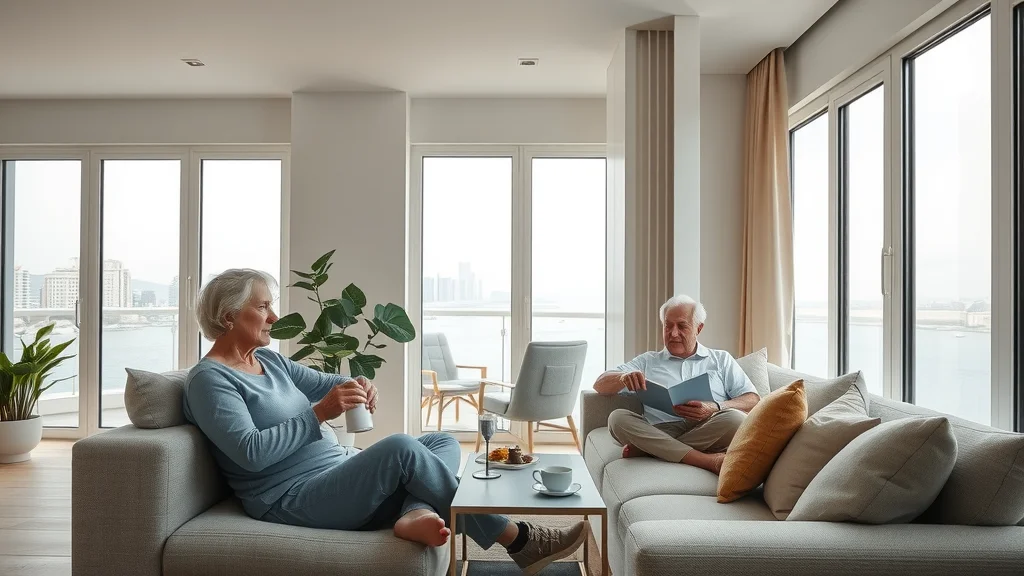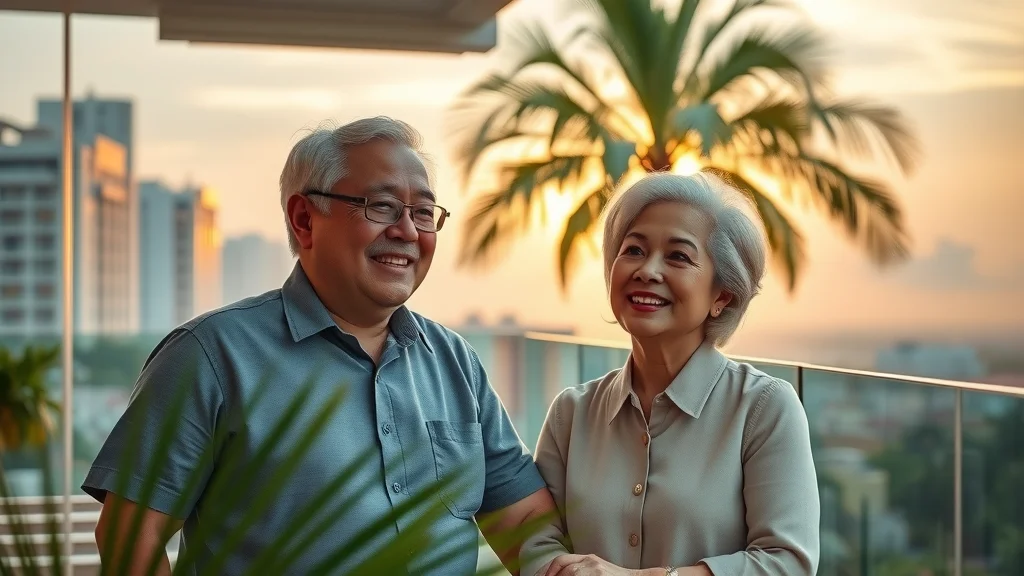Did you know the number of U.S. retirees living abroad has jumped over 40% in the last decade? As cost of living rises and remote lifestyles become more accessible, an increasing number of expat retirees are choosing new destinations for their golden years. If you dream of swapping familiar routines for vibrant cultures, affordable living, and adventure, this list of the top expat retirement destinations will change how you think about retiring abroad. Let’s reveal where your possibilities are greatest, how much it really costs, and what it takes to thrive as an expat retiree.
The Changing Landscape of Expat Retirement Destinations: A Surprising Look at Trends and Numbers
In recent years, the idea of retiring abroad has evolved dramatically. Expat retirement destinations are now being shaped by economic shifts, global healthcare challenges, and the changing desires of retirees. No longer satisfied with the traditional “sun and sand” approach, today’s retirees seek out not only low cost of living but also places with robust healthcare systems, strong expat retiree communities, and opportunities for meaningful engagement.
Consider this: According to the latest global statistics, countries once off the radar—like Vietnam and Portugal—are now top retiree magnets, competing with established destinations like Mexico and Costa Rica. Many retirees are prioritizing safety, public healthcare access, and legal ease for residency visas. The shift means a broader selection of amazing places to retire, but also more to weigh as you plan your move. With so many expat retirement destinations emerging, thoughtfully comparing options is the key to finding the right fit for your next chapter.

What You'll Learn About Expat Retirement Destinations
- Latest trends in expat retirement destinations
- Comprehensive list and analysis of the top places to retire
- Key factors such as cost of living, healthcare, and expat retiree communities
- Details for expat retiree planning and budgeting
How We Ranked the Best Expat Retirement Destinations
- Weighting factors: affordability, healthcare, safety, expat retiree communities, climate
- Methodology behind scoring and ranking places to retire
- Real expat retiree experiences and expert opinions
Table: Quick Comparison of Top Expat Retirement Destinations and Cost of Living

| Destination | Monthly Cost of Living | Healthcare Rating | Expat Community Rating | Safety Index | Quality of Life |
|---|---|---|---|---|---|
| Costa Rica | $1,500–$2,200 | 9/10 | 9/10 | 8/10 | 9/10 |
| Portugal | $1,600–$2,500 | 9/10 | 8/10 | 9/10 | 9/10 |
| Mexico | $1,200–$2,000 | 7/10 | 9/10 | 7/10 | 8/10 |
| Spain | $1,800–$2,700 | 9/10 | 7/10 | 9/10 | 9/10 |
| Thailand | $1,000–$1,800 | 8/10 | 8/10 | 7/10 | 8/10 |
| Panama | $1,400–$2,300 | 7/10 | 8/10 | 8/10 | 8/10 |
| Malaysia | $1,100–$1,700 | 8/10 | 7/10 | 8/10 | 8/10 |
| Ecuador | $1,000–$1,600 | 7/10 | 9/10 | 7/10 | 8/10 |
| France | $2,000–$2,900 | 9/10 | 6/10 | 8/10 | 9/10 |
| Vietnam | $900–$1,400 | 7/10 | 7/10 | 7/10 | 8/10 |
List: The 10 Best Expat Retirement Destinations in the World
- Costa Rica – The Jewel of Central America for Expat Retirees
- Portugal – Europe’s Affordable, Sunny Haven for Retiring Abroad
- Mexico – Low Cost of Living and Vibrant Expats
- Spain – Mediterranean Charm Meets Great Healthcare
- Thailand – Southeast Asia’s Affordable Paradise
- Panama – Warm Weather, Easy Residency, Robust Expat Retiree Scene
- Malaysia – Tropical Living with High Quality of Life
- Ecuador – Accessible Andes Adventure for Retiring Abroad
- France – Cultured Living for Expat Retirees
- Vietnam – Ultra Low Cost Living in a Dynamic Destination
Costa Rica: Central America’s Best Expat Retirement Destination

Costa Rica routinely tops the list of places to retire due to its unbeatable blend of natural beauty, affordable living, and a welcoming culture. As the most sought-after expat retirement destination in Central America, Costa Rica delivers a balance of low cost of living and high quality of life. Expat retirees praise the country’s solid healthcare system, particularly the public healthcare option (“Caja”), which is accessible and budget-friendly. Residency is achievable via the well-known pensionado visa, making it easier for foreign retirees to settle here, provided they have a modest, steady income or social security.
Living in a peaceful beach town or a green mountain village, retirees enjoy a warm climate year-round, clean air, and a deeply supportive expat community. Costs for daily living, private health insurance, and well-appointed homes are far less than in most parts of the United States, while the sheer joy of “pura vida” living is priceless. For those considering retiring abroad with comfort and nature, Costa Rica stands in a class of its own.
"Costa Rica’s quality of life surpasses expectations—expats are welcomed with open arms." – Recent expat retiree
Portugal: Europe’s Top Place to Retire for Expats
Portugal has rapidly become one of Europe’s preferred expat retirement destinations thanks to its low cost by Western European standards, outstanding safety, and a fantastic climate. Retiring in Portugal means access to superb public health and an easy-to-navigate retirement visa system. Whether you’re drawn to a picturesque beach town along the Algarve or the cobblestone lanes of a hilltop city, Portugal offers a spectrum of affordable and vibrant options.
The Portuguese healthcare system combines affordable public healthcare with high-quality private options. Expat retirees benefit from relaxed residency rules (especially for those with stable monthly or passive income), fiscal incentives, and a cappuccino culture that turns neighbors and newcomers into friends. The thriving international community, excellent local produce, and a balanced approach to life make Portugal a unique destination in the world of expat retirement destinations.
Mexico: Expat Retirement Destination for Affordability and Culture

Mexico is an enduring favorite among American retirees for good reason. Offering low cost of living, accessible health insurance, and close proximity to the United States, it’s ideal for those seeking a blend of adventure, community, and ease of travel. Vibrant beach towns like Puerto Vallarta, colonial cities such as San Miguel de Allende, and cosmopolitan hubs like Mexico City cater to a range of tastes and budgets.
Residency is simplified through Mexico’s “temporary” and “permanent” visa options, allowing retirees with reliable monthly income or social security to settle with minimal hassle. Access to both public and private medical care keeps healthcare spending manageable, while a large, established expat retiree network means newcomers quickly build supportive social circles. The country’s warmth isn’t just in the climate—it’s felt in every interaction, making Mexico a compelling retirement destination.
"Our dollar stretches farther here, and we’ve built lifelong friendships." – Couple from Texas
Spain: Classic Mediterranean for Retiring Abroad

Spain’s classic Mediterranean lifestyle, high-quality healthcare system, and mild climate make it one of the top places to retire in Europe. From the bustling streets of Barcelona to the quaint villages of Andalusia, Spain’s retirement appeal lies in its blend of old-world charm and modern infrastructure. Expat retirees enjoy the “Golden Visa”—a residency pathway for those investing in property or proving sufficient income.
High standards of public health, extensive public transportation, and endless cultural attractions keep retirement interesting and affordable. Many regions offer a distinctly low cost of living compared to major US cities, with delicious local cuisine and a relaxed rhythm contributing to a life well lived. Spain is an excellent example for those pursuing quality of life as a cornerstone of their retiring abroad experience.
Thailand: Low Cost, High Life for Expat Retirement
Thailand is famed for delivering an incredibly affordable living experience without sacrificing comfort, amenities, or adventure. Urban centers like Chiang Mai and beach enclaves like Hua Hin thrive with thriving expat retiree communities drawn to friendly locals, world-class cuisine, and monthly living costs that often dip below $1,500—even in the best locations.
The Thai retirement visa is straightforward for those over 50 with qualifying monthly or passive income, and the quality of both public and private healthcare is well respected, with affordable premiums for private insurance. In addition to sunshine and vibrant culture, retirees benefit from a sense of safety and a laid-back pace that brings new meaning to “savoring the moment.”
Panama: Easy Residency and Great Expat Retiree Benefits

Panama’s globally renowned Pensionado visa makes it one of the most convenient retirement destinations for expat retirees. With proof of social security or pension income (as low as $1,000/month), retirees can access residency and perks like discounts on travel, entertainment, and medical care. Expat retirees favor Panama’s mix of modern city living and tranquil beach town escapes along both the Pacific and Caribbean coasts.
Accessible healthcare, a U.S. dollar-based economy, and a strong safety record are major draws. With robust communities of fellow expats, retirees often find making friends and adapting to local life is remarkably smooth. As a retirement destination, Panama combines the comforts of home with the best of tropical living.
Malaysia: A Tropical, Low Cost of Living Oasis
Malaysia is gaining recognition for its excellent value-for-money and cosmopolitan lifestyle. The Malaysia My Second Home (MM2H) visa provides a long-term solution for expat retirees, permitting easy residency for those with modest income and savings. Popular cities such as Penang and Kuala Lumpur offer everything from wet markets to five-star health facilities, all at a fraction of the cost of living in the West.
Malaysia delivers shimmery coastlines, bustling food scenes, and a welcoming multicultural society. Public healthcare meets international standards while private insurance remains highly accessible. For retirees seeking a blend of excitement and ease, Malaysia’s affordable living and warm climate check all the boxes.
Ecuador: Affordable Adventure and Expat Communities

Ecuador completes the shortlist for affordable south american expat retirement destinations. With mountains, beach towns, and vibrant urban centers, Ecuador offers something for every taste. The country’s retirement visa requires proof of modest passive income or pension, usually under $900 per month, making it one of the most accessible entry points for retiring abroad in the Americas.
Beyond affordability, expat retirees rate Ecuador’s public healthcare as good and private health insurance as inexpensive. Strong expat communities in cities like Cuenca provide social ties and support, turning Ecuador into a haven for those who want healthy, active living with maximum purchasing power.
France: European Culture and Elegance for Expat Retirees
France is synonymous with culture, cuisine, and refined living. Retiring abroad in France is a dream for many, and the reality is more accessible than expected with a long-stay visitor visa and affordable public healthcare. Costs in the countryside and smaller cities are surprisingly modest, while the French approach to leisure—outdoor cafés, local markets, and relaxed afternoons—elevates daily life.
France also boasts some of Europe’s top-rated hospitals and private insurance networks. For expat retirees who want to savor life’s beauty, France’s historical landscapes and traditions provide the ultimate backdrop.
Vietnam: Ultra-Low Cost, High Experience Living

Vietnam is the rising star of ultra low cost living for expat retirees. Monthly spending for a comfortable apartment, health insurance, and everyday indulgences can fall below $1,200 in cities like Da Nang or Ho Chi Minh City. A vibrant street life, delicious food, and bustling markets present endless ways to explore local culture.
While Vietnam’s retirement visa process can be more complex, many retirees manage long-term stays via business, student, or volunteer options, often with custom solutions from reputable visa agents. Affordable private medical care, friendly people, and energetic expat communities round out Vietnam’s appeal as one of the world’s most dynamic retirement destinations.
Factors That Make These the Best Expat Retirement Destinations
- Cost of living and affordability for expat retirees
- Healthcare accessibility and quality
- Safety ratings for older expats retiring abroad
- Ease of legal residency and social security compatibility
- Strength and vibrancy of expat retiree communities
Explore the expat retiree experience in action: This engaging summary video features international retirees laughing at cafés, hiking scenic trails, enjoying markets and sunsets, set to upbeat music and local sounds from Costa Rica, Portugal, and Vietnam.
Cost of Living: How Much Do You Need to Retire in Top Expat Retirement Destinations?

The cost of living is one of the most important factors for any expat retiree considering where to move. In top destinations like Costa Rica, Ecuador, and Vietnam, it’s possible to enjoy a high quality of life on a modest monthly income. Average budgets, as shown in the comparison table above, often range from $1,000 to $2,500 per month—with rent, groceries, medical care, transportation, and even entertainment included.
It’s essential to recognize the role of location: city centers and popular tourist areas will cost more, while smaller towns generally offer greater value. Many expats supplement their passive income or social security with part-time work or online businesses abroad, expanding options for lifestyle upgrades. From affordable beach towns to peaceful mountain villages in central america or south america, the key is matching your desired comfort level with realistic planning. Researching real rent ranges, healthcare costs, and the expat retiree community in each retirement destination ensures you make a truly informed choice.
Social Security, Residency, and Healthcare: What Expat Retirees Need to Know
Understanding social security, residency visa options, and the healthcare system abroad is vital. Most expat retirement destinations make it possible to receive U.S. social security payments via international direct deposit, though it’s important to check your country’s compatibility and any local tax implications.
Popular residency pathways include pensionado visas (like in Panama and Costa Rica), retirement visas (Thailand, Portugal), or investment-based status (Spain, France). Read up on each destination’s residency requirements, expected processing times, and required monthly/passive income levels. Healthcare varies: some countries offer good public health options for legal residents; others require private health insurance or a combination of public and private medical care. Ultimately, your chosen expat retirement destination should support both your long-term health and financial peace of mind.
Listen to real expat retirees from Mexico, Spain, and Ecuador share their advice, surprises, and favorite experiences retiring abroad. Gain first-hand insight into making the transition and building a fulfilling new chapter overseas.
Pros and Cons: Weighing Expat Retirement Destinations
- Advantages of relocating for retirement
- Potential drawbacks and solutions
- Community insights from expat retirees

Relocating for retirement brings life-changing advantages, from better cost of living and rich culture to adventure and warm climate. The appeal of top expat retirement destinations is the promise of a higher quality of life with less financial stress. Drawbacks include adapting to healthcare systems, learning new languages, or managing local bureaucracy (especially when applying for a residency visa or navigating tax foreign concerns). Seeking community is essential; expat retiree groups can offer invaluable support, especially for newcomers.
Successful retirees embrace the challenge as an opportunity for growth. Many find that connecting with existing expat retiree communities and visiting before committing helps smooth the transition. Solution-oriented thinking—such as maintaining dual health insurance or keeping up with social security regulations—turns potential cons into minor hurdles on your retirement journey.
Lists: Expat Retirement Destinations for Specific Interests
- Best expat retirement destinations for low cost of living
- Top choices with robust healthcare
- Great cities for single or solo expat retirees
- Ideal places for retiring abroad if you prefer warm year-round climates
Quote: Real Expat Retiree Advice for Choosing the Right Place to Retire
"Visit before you leap, talk to local expat retiree groups, and compare firsthand—every destination has its own rhythm."
Frequently Asked Questions (FAQs) on Expat Retirement Destinations
-
How do I choose between expat retirement destinations?
Start by clarifying your priorities—cost of living, healthcare, climate, culture, and travel connections. Visit your top choices if possible, speak with current expat retirees, and create a financial plan that factors in residency requirements, taxes, and ongoing expenses. Don’t rush: the best destination matches your lifestyle, budget, and long-term happiness. -
What documents and planning are required for retiring abroad?
You’ll need valid passports, proof of income (such as social security or pension statements), health insurance, and possibly medical checks or background records. Plan for residency visa paperwork, bank statements, and translated legal documents. Seek updated information from consulates or expat networks in your chosen retirement destination. -
How can I access my social security as an expat retiree?
Most major expat retirement destinations allow direct deposit of U.S. social security benefits into local bank accounts. Notify the Social Security Administration about your move, check for tax treaties and local reporting rules, and consider backup plans in case banking regulations change in your location.
People Also Ask: Top Expat Retirement Destinations
What is the best country to retire as an expat?
Costa Rica, Portugal, and Spain frequently top rankings for best countries to retire as an expat, thanks to their balance of low cost of living, strong expat retiree communities, and access to quality healthcare systems. The "best" depends on your lifestyle priorities, budget, and language preferences.
What is the $1000 a month rule for retirement?
The "$1,000 a month rule" refers to retiring in a country where you can live comfortably on $1,000 or less per month—including housing, food, and healthcare. Destinations like Vietnam, Ecuador, and parts of Thailand fit this rule due to their ultra low cost of living and affordable healthcare for expat retirees.
What is the cheapest and safest country to retire in?
Vietnam and Ecuador consistently rank among the cheapest countries for retirement, offering excellent value and strong expat retiree networks. For a blend of affordability and safety, Portugal and Costa Rica also score high thanks to their quality of life, healthcare services, and welcoming communities.
Where do most retired expats live?
Most retired expats live in destinations with well-developed expat retiree communities, easy visa options, and proven quality of life. Popular places include Mexico, Costa Rica, Portugal, Spain, and increasingly Southeast Asian countries like Thailand and Malaysia.
Key Takeaways from Our Guide to Expat Retirement Destinations
- Expanding number of excellent expat retirement destinations worldwide
- Careful consideration of lifestyle, cost, and healthcare is essential
- Expat retiree experiences and community support play a crucial role
 Add Row
Add Row  Add
Add 


Write A Comment